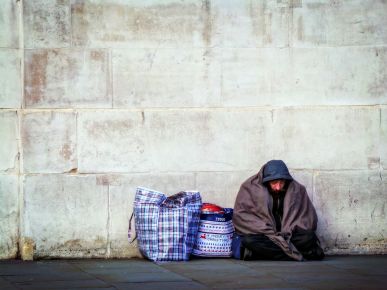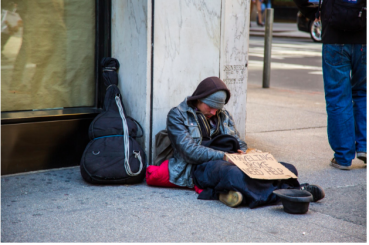According to The State of Homelessness in America, “There are an estimated 553,742 people in the United States experiencing homelessness on a given night, according to the most recent national point-in-time estimate (January 2017). This represents a rate of approximately 17 people experiencing homelessness per every 10,000 people in the general population.”

“I got involved for selfish reasons; my husband had just left me and I was in pain. I knew that helping others would make me feel better,” Nancy Ferry, a statistician and homeless shelter volunteer, said.
Every Saturday morning, Ferry invites the people of Center City, Philadelphia for coffee, music and a big lunch. The people she came in contact with were living on the street and sleeping under bridges. Most of the people were carrying bags, they smelled bad and they would tell stories of living on the street.
People do not realize that not every homeless person is identifiable. According to Phillypolice.com, “Homeless or unidentified persons 18 years and older found wandering the streets, willing to accept assistance, may be taken into protective custody even though they have not committed a crime.” The majority of people who are homeless did not choose to be in this state.
“Most of the people left their unstable homes, forced out by natural disasters, sought comfort after war tours, and turned to alcohol and drugs because of peer pressure,” Ferry said.
Homelessness and addiction are huge problems in the United States. According to Michael’s House, “About 38% of the homeless abuse alcohol. Alcohol abuse is more common among the older set within the homeless population. About 26%of the homeless abuse drugs other than alcohol. Drug abuse is more common among younger homeless people.”
Homeless people can be perceived as invisible to bystandards. Students and members of the community can stop this social norm by volunteering at homeless shelters and donating money to provide a better life.
“The most rewarding experience of being involved with Campus Ministry is that I get to serve others and learn about faith,” Rachel Maxey, a senior education major, said. “Through PB&J nights, Project Appalachia and New Orleans I have been able to provide hope and joy to people.”

According to the Huffington post, “As the number of homeless people increased, the owners of fast-food restaurants began to lock their restroom doors and charge 10 or 25 cents per use. Of course, tokens to the restrooms were made available to restaurant patrons at the counter.” To a bystander 10 to 25 cents does not seem like a lot of money, but for a person who has no money that is high price to use the bathroom.
“I believe it is important people stay active in their communities and help others in need,” Maxey said. “I live my life treating others how I want to be treated.”
Ferry has been involved with the Helping the Homeless organization of Philadelphia for 10 years. She wants to give them the love they deserve. Each person had a compelling story to tell her and she saw them as friends then strangers.
Everyone should learn from Nancy Ferry, and not look the other direction when they come in contact with a homeless person. You never know what that person may be going through.
“God gave me love for people,” Ferry said.


